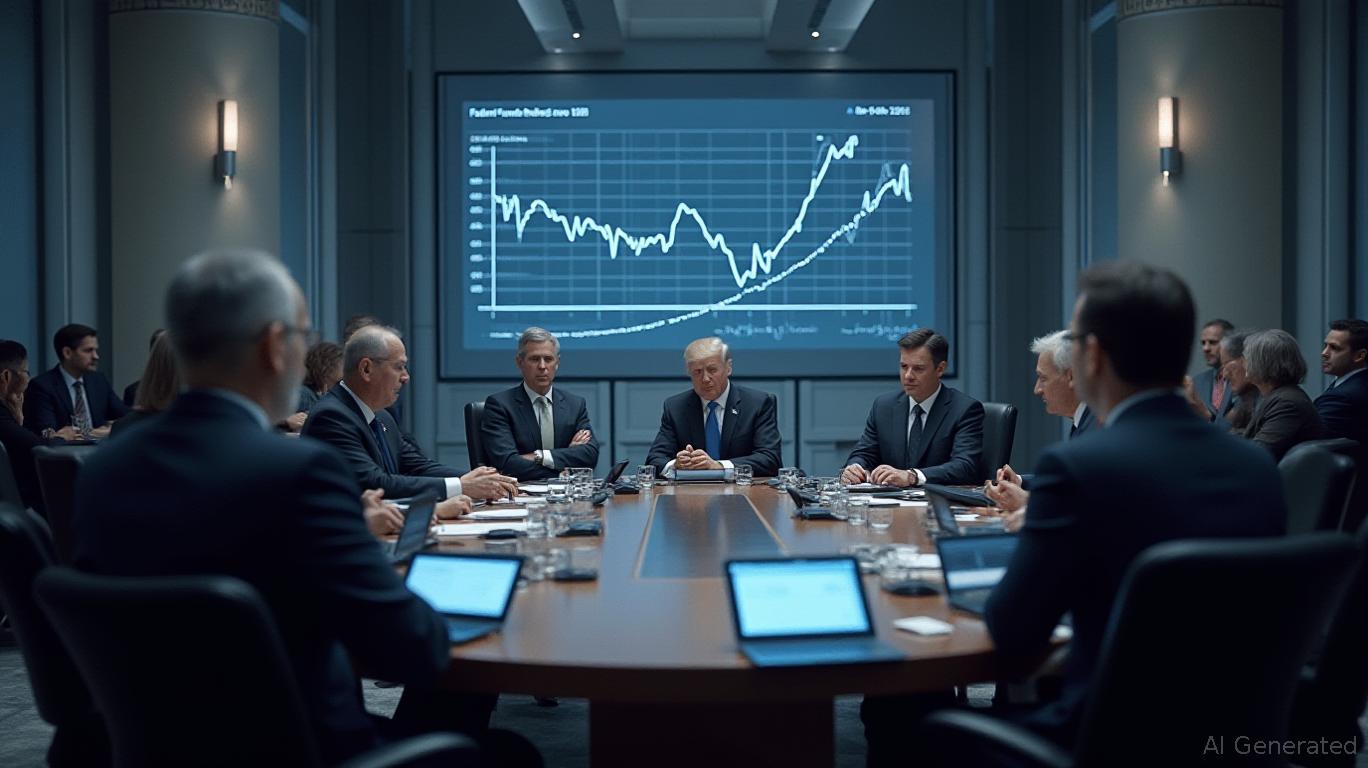The Fed's Groupthink Conundrum: Why Policy Risks Are Brewing and How to Navigate Them
The Federal Reserve's 2025 policy framework review has exposed a critical flaw in its decision-making process: institutional groupthink. For years, the Fed's adherence to a rigid, consensus-driven approach has led to delayed inflation responses, overly optimistic economic forecasts, and a monetary policy that lags behind reality. This dynamic poses significant risks for markets, particularly as the Fed navigates a delicate balancing act between cooling inflation and avoiding a recession. Here's why investors should pay attention—and how to position portfolios for the turbulence ahead.
Ask Aime: Why are investors wary of the Federal Reserve's policy framework review?
The Groupthink Trap: How the Fed Got It Wrong
The Fed's 2020 shift to flexible average inflation targeting (FAIT) aimed to prioritize a “hot labor market” over preemptive rate hikes. While well-intentioned, this framework created a self-reinforcing cycle of overconfidence. By tying policy to an “and” condition—requiring both 2% inflation and full employment—the Fed delayed rate hikes until inflation was already soaring.
Ask Aime: How will the Fed's policy shift impact the stock market's volatility?

The results were predictable: the Fed's 2022–2023 rate-hiking blitz (culminating in a 5.25% peak) was too little, too late. By the time policymakers acted, inflation had already breached 9%, forcing abrupt adjustments that spooked markets. The June 2025 FOMC projections reveal the lingering fallout: GDP growth is now expected to slow to just 1.4% this year, while core inflation remains stubbornly above 3%.
Why Groupthink Persists—and Why It Matters
The Fed's governance structure exacerbates groupthink. With 174 votes cast between 2021 and 2022, only two dissented—a staggering 1% dissent rate. This lack of debate signals a culture where conformity trumps critical analysis. Key issues include:
- Overreliance on Consensus: The Fed's “one-voice” communication strategy stifles transparency. Unlike the ECB or Bank of England, which publish dissenting opinions, the Fed's unified stance masks internal disagreements.
- Structural Blind Spots: The Fed's focus on labor markets and inflation ignores structural risks like debt dynamics, geopolitical instability, or technological disruption. Its 2025 projections, for instance, assume a smooth return to 2% inflation by 2027—a rosy scenario unmoored from supply-chain realities.
- Lingering Policy Errors: The Fed's 2020 misstep of labeling rising inflation as “transitory” still haunts markets. Current projections for a 3.9% federal funds rate by year-end ignore the risk of prolonged inflation, as evidenced by the 3.0% 2025 PCE forecast—a 0.3% upward revision from March 2025.
Market Risks Ahead: What to Watch
The Fed's institutional flaws create three key risks for investors:
Ask Aime: Smart portfolio moves for navigating the Fed's groupthink risks?
1. Policy Whiplash
The Fed's delayed response to inflation now requires abrupt course corrections. If inflation remains sticky (as the 70% confidence interval for 2025 PCE inflation—2.0% to 4.0%—suggests), markets could face another round of rate hikes or prolonged high rates.
Historical data underscores these risks: a strategy of buying the S&P 500 on Fed rate decision dates and holding for 30 days from 2020 to 2025 would have yielded no returns, with a maximum drawdown of -12.99%. This highlights the perils of timing market moves around policy signals.
A persistently inverted yield curve (where short-term rates exceed long-term rates) would signal a recession, spooking equity markets.
2. Asset Price Volatility
The Fed's uncertain path creates chaos for sectors like housing and tech, which are rate-sensitive. Meanwhile, gold and Treasuries—traditional inflation hedges—could surge if the Fed's credibility erodes further.
3. Geopolitical Spillover
The Fed's mistakes don't exist in a vacuum. Emerging markets, already reeling from dollar strength, could face capital flight if the Fed's policy errors trigger a global growth slowdown.
Investment Strategies to Mitigate Risk
Investors can't afford to ignore the Fed's flaws. Here's how to adapt:
- Short-Term: Play the Fed's Uncertainty
- Treasuries: Buy intermediate-term bonds (e.g., iShares 7-10 Year Treasury ETF | IEF) to capitalize on yield fluctuations.
Dividend Stocks: Utilities (e.g., NextEra Energy | NEE) and consumer staples (e.g., Procter & Gamble | PG) offer stability in volatile environments.
Medium-Term: Hedge Against Inflation Lingering
- Gold: Physical gold or ETFs like SPDR Gold Shares (GLD) provide inflation protection.
Energy Plays: Companies with exposure to energy transition (e.g., Tesla | TSLA for EVs, or Schlumberger | SLB for renewables infrastructure) benefit from sustained inflation-driven demand.
Long-Term: Bet on Reform
- Monitor the Fed's 2025 framework review. If reforms like “balanced forward guidance” or a return to preemptive policy take hold, sectors like banks (e.g., JPMorgan | JPM) could rebound as rates stabilize.
Final Take: The Fed's Clock Is Ticking
The Fed's groupthink isn't just a policy failure—it's a market risk multiplier. With GDP growth downgraded and inflation risks elevated, investors must prepare for volatility. While reforms on the horizon offer hope, the Fed's current trajectory suggests more turbulence lies ahead. Stay nimble, hedge inflation, and avoid overexposure to rate-sensitive assets until clarity emerges.
In short: the Fed's flaws are baked into market risks. Investors who acknowledge them—and plan accordingly—will weather the storm.

Comments
No comments yet